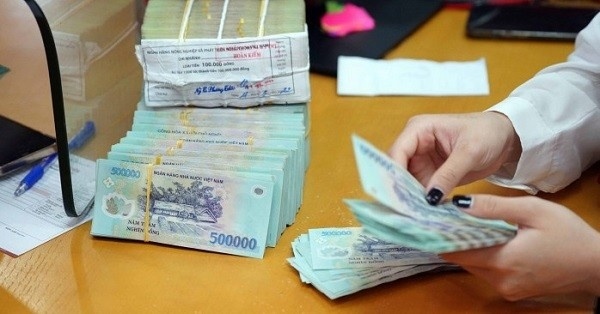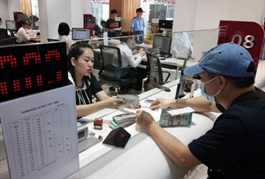Banks post strong H1 performances on credit growth and cost cuts
Banks post strong H1 performances on credit growth and cost cuts
Banks have reported strong first-half results, fuelled by double-digit credit growth, improved asset quality, and operating efficiency, pointing to a positive outlook for the rest of the year.
According to its Q2 financial statement, KienlongBank recorded a consolidated pre-tax profit of approximately $22.6 million, marking a 67.2 per cent jump on-year.
This is the bank’s highest quarterly profit since Q1, 2021. For the first half of 2025, the bank’s pre-tax profit reached $36.8 million, up 67 per cent on-year and fulfilling nearly 67 per cent of its full-year business target of $55.2 million.
KienlongBank’s profit growth was driven by higher revenue and reduced operating expenses.
|
By the end of Q2, the bank’s total assets stood at $3.9 billion, up 5.9 per cent from the start of the year. Customer deposits reached $2.93 billion, surging 15.2 per cent, the highest six-month deposit growth the bank has seen in years.
TPBank also delivered a strong first-half performance, with estimated pre-tax profit exceeding $164 million, up more than 12 per cent on-year. The bank attributed this growth to credit expansion of nearly 11.7 per cent, focused primarily on retail banking, controlled real estate lending, and consumer finance, the segments that typically yield high net interest margins.
Nam A Bank posted over $100 million in pre-tax profit in the first half of 2025, a 14 per cent increase compared to the same period last year. The results helped the bank maintain return on equity (ROE) of nearly 20 per cent and return on assets (ROA) of 1.5 per cent.
As of the end of June, Nam A Bank’s total assets approximated $12.6 billion, reflecting over 30 per cent growth since the beginning of the year, a significant milestone in its 32-year history.
Meanwhile, major state-owned banks VietinBank, Agribank, and Vietcombank have also released their preliminary business results for the first half of 2025.
VietinBank reported a positive performance, with credit growth estimated at 10 per cent compared to the end of 2024, and mobilised capital up by approximately 9 per cent.
The bank’s pre-provision operating profit continued to grow on-year, signalling healthy momentum. Several analysts have expressed optimism about VietinBank’s growth prospects in the near term.
Agribank saw its most robust first-half results in four years, since the launch of its 2021-2025 restructuring and bad debt resolution plan.
By mid-2025, the bank’s total mobilised capital exceeded $84 billion, while total outstanding loans surpassed $74 billion, both up from the same period last year.
Agricultural and rural loans accounted for over $45.2 billion, or more than 61 per cent of its total credit portfolio.
Vietcombank also achieved comprehensive results in the first half of 2025, maintaining its position as a leading bank in terms of operational quality and efficiency.
Chairman Nguyen Thanh Tung shared that the bank’s total assets were estimated at over $84 billion, up 1.8 per cent from the end of 2024. Total credit extended to the economy rose by more than 5 per cent, with the credit structure continuing to shift towards sustainable and high-quality lending.
According to the State Bank of Vietnam (SBV), as of June 30, total system-wide credit had grown by nearly 10 per cent, 2.5 times the rate in the same period of 2024,
At the SBV’s first-half meeting to review monetary policy implementation results on July 8 in Hanoi, Pham Chi Quang, director of the SBV’s Monetary Policy Department, noted that credit will play a vital role in achieving the government’s 8 per cent GDP growth target this year and double-digit growth in subsequent years.
He projected that credit growth could exceed the 16 per cent target set for 2025. Inflation remains under control, enabling increased credit supply to the economy.
The central bank, however, will continue to carefully manage the credit room to strike a balance between inflation control and economic stimulus, said Quang.
New National Assembly legalisation, originally a pilot mechanism for handling bad debts, provides banks with new tools to reduce risk provisions, narrow profit gaps, and sustain earnings, even in the face of narrowing net interest margins.
- 15:33 23/07/2025

























